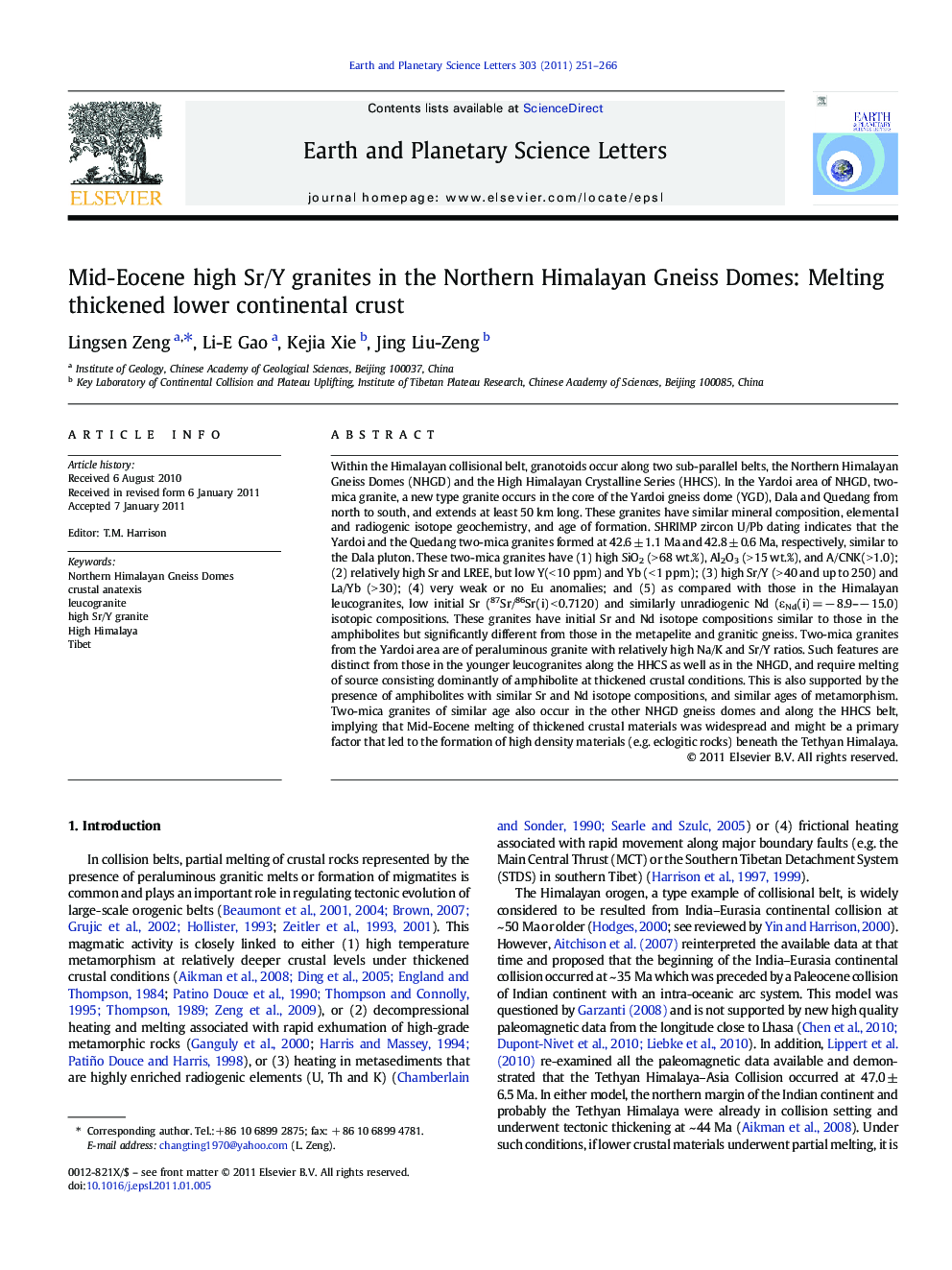| کد مقاله | کد نشریه | سال انتشار | مقاله انگلیسی | نسخه تمام متن |
|---|---|---|---|---|
| 6430739 | 1634833 | 2011 | 16 صفحه PDF | دانلود رایگان |

Within the Himalayan collisional belt, granotoids occur along two sub-parallel belts, the Northern Himalayan Gneiss Domes (NHGD) and the High Himalayan Crystalline Series (HHCS). In the Yardoi area of NHGD, two-mica granite, a new type granite occurs in the core of the Yardoi gneiss dome (YGD), Dala and Quedang from north to south, and extends at least 50 km long. These granites have similar mineral composition, elemental and radiogenic isotope geochemistry, and age of formation. SHRIMP zircon U/Pb dating indicates that the Yardoi and the Quedang two-mica granites formed at 42.6 ± 1.1 Ma and 42.8 ± 0.6 Ma, respectively, similar to the Dala pluton. These two-mica granites have (1) high SiO2 (> 68 wt.%), Al2O3 (> 15 wt.%), and A/CNK(> 1.0); (2) relatively high Sr and LREE, but low Y(< 10 ppm) and Yb (< 1 ppm); (3) high Sr/Y (> 40 and up to 250) and La/Yb (> 30); (4) very weak or no Eu anomalies; and (5) as compared with those in the Himalayan leucogranites, low initial Sr (87Sr/86Sr(i) < 0.7120) and similarly unradiogenic Nd (εNd(i) = â 8.9-â 15.0) isotopic compositions. These granites have initial Sr and Nd isotope compositions similar to those in the amphibolites but significantly different from those in the metapelite and granitic gneiss. Two-mica granites from the Yardoi area are of peraluminous granite with relatively high Na/K and Sr/Y ratios. Such features are distinct from those in the younger leucogranites along the HHCS as well as in the NHGD, and require melting of source consisting dominantly of amphibolite at thickened crustal conditions. This is also supported by the presence of amphibolites with similar Sr and Nd isotope compositions, and similar ages of metamorphism. Two-mica granites of similar age also occur in the other NHGD gneiss domes and along the HHCS belt, implying that Mid-Eocene melting of thickened crustal materials was widespread and might be a primary factor that led to the formation of high density materials (e.g. eclogitic rocks) beneath the Tethyan Himalaya.
Research Highlights⺠The Yardoi two-mica granites in the NHGD formed at ~43-44 Ma. ⺠Amphibolite experienced high grade metamorphism and partial melting at ~43 Ma. ⺠These high Sr/Y granites were derived from high pressure melting of amphibolite.
Journal: Earth and Planetary Science Letters - Volume 303, Issues 3â4, 1 March 2011, Pages 251-266